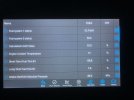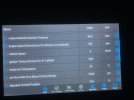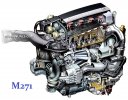hofnerpres1
Senior Member
- Joined
- Sep 23, 2013
- Messages
- 50
- Reaction score
- 30
- Location
- Buxton
- Your Mercedes
- CLK 2006 A209 Kompressor
Hello again. Following a fun time and replacement of the Seimens ECM the car is running well but every run eventually throws up a MIL telling me the mixture is too rich at Idle - Merc fault code P2029-002. This is confirmed by a high fuel condition reading on the downstream of the Cat Lambda Sensor - steady at around 900mv at tickover - should be nearer 500mv I believe. Naturally this causes the Fuel Trims to cut back on the injection times up to over 25% and start logging fault codes. Given the car is 16 years and has had the benefit of an oil filled engine harness, both Lambda sensors have been replaced with Bosch OEM parts - 22mm quality spanner and plenty of plus-gas. ( Yes, I've replaced the $12 hose, checked for air leaks and fitted new Cam Sensors and wiring oil blockers). The rear sensor readings are steadier but the rich condition at idle remains. Looking at the OBD readings the figure that jumps out is 18 g/s air flow from the MAF. WIS data states this should be 5-10 g/s at tickover so I'm thinking an over reading signal is fooling the ECM and asking it for the equivalent excessive fuel supply. The Lambda sensors are seeing this rich mixture and struggling to correct it via Fuel Trimming the injector times. This air flow reading is the ECMs processed figure , not the raw output so a good spare ECM was quickly substituted and the figure remained the same. I know that an over reading MAF is rare and also when it was disconnected the fuel trims and downstream sensors remained unchanged which confuses my poor brain. Are we good to call " Bad MAF" ?
Attached are a few screen shots from the iCarsoft CR Max. Can some kind member tell me what that Self Adaption screen is trying to tell us ?
Attached are a few screen shots from the iCarsoft CR Max. Can some kind member tell me what that Self Adaption screen is trying to tell us ?









